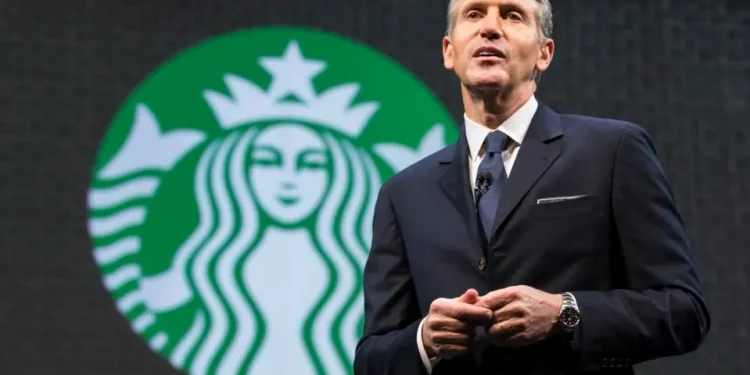The fear of not succeeding was a significant motivator for Howard Schultz, the CEO of Starbucks. Growing up in the projects of Brooklyn, he overheard his parents arguing about financial matters and would often answer the phone to inform bill collectors that his parents weren’t available. Observing his father’s struggles in various blue-collar roles, where he never earned more than $20,000 annually, Schultz remarked, “I am all too familiar with the face of self-defeat.”
“As I matured, I frequently clashed with my father and felt resentful towards his lack of ambition and responsibility,” Schultz recalls in his 1997 memoir, Pour Your Heart Into It. “I believed he could have achieved so much more if he had put in more effort. It wasn’t until after his passing that I understood I had misjudged him. He attempted to navigate the system, but it ultimately broke him. His low self-worth prevented him from escaping his circumstances and improving his life.”
Having witnessed his father’s unfulfilled work life and his death without any financial security or retirement savings, Schultz promised himself that if he ever had the power to make a change, he would not abandon anyone. “Embrace the moment and take charge of your future.”
As a young boy, Schultz spent countless hours playing sports with friends from morning until night, and his athletic talent was recognized when Northern Michigan University offered him a football scholarship. However, during college, he discovered he wasn’t as skilled in football as he had believed and ultimately did not play. After losing his scholarship, he juggled multiple jobs and occasionally sold plasma to continue his education.
“It took me several years to discover my true passion, but leaving Brooklyn and obtaining a college degree inspired me to keep pursuing my dreams,” Schultz reflects. “Overcoming what seemed like insurmountable challenges made subsequent hurdles seem less intimidating.”
In 1981, while managing a sales team for Hammarplast, a Swedish kitchenware firm, Schultz noticed an unusually large order for a specific type of drip coffee maker from a small Seattle retailer named Starbucks. Curious about the business, he traveled to Seattle to learn more.
At the original Starbucks location, Schultz was captivated by the bins filled with coffee from various regions, including Sumatra, Kenya, Ethiopia, and Costa Rica. At that time, Starbucks was a small Seattle establishment focused on selling bags of whole-bean coffee. After trying a cup of Sumatra coffee, Schultz was immediately hooked. He began to inquire about the different coffees available worldwide, and his enthusiasm and vision for Starbucks started to crystallize.
It took Schultz a full year to persuade Starbucks’ three owners to hire him. He presented his vision of how Starbucks could expand nationally and become a brand associated with high-quality coffee. Just as he thought he had them convinced, they declined, seeing him as too much of a risk and wanting to maintain the status quo. The owners preferred to keep Starbucks as a retailer, steering clear of the restaurant business.
Less than 24 hours later, fueled by his passion for Starbucks, Schultz succeeded in persuading the owners to give him a chance. Beginning with a small stake in a promising venture, he was appointed director of operations and marketing. “I’ve often wondered what might have happened had I accepted their initial decision,” Schultz reflects. “Most individuals would just walk away when turned down for a job.” He adds, “Time and again, I’ve had to muster every bit of perseverance to make it work.”
After a visit to Italy, where he experienced bustling coffeehouses serving elaborate espresso-based drinks, Schultz recognized that Starbucks lacked the social engagement that Italians associate with coffee. “In Italy, coffee became a symphony,” he explains. “They understood the deep personal connection people have with coffee, its allure and romance.” Schultz believed that his vision could drastically transform Starbucks, but once again, his superiors disagreed, insisting on viewing Starbucks as a retailer rather than a café, prompting Schultz to resign and pursue his vision on his own.
In 1985, taking another leap of faith, Schultz founded Il Giornale, a chain of coffee bars. With the success of his venture and enough venture capital, he acquired Starbucks two years later and rebranded Il Giornale Coffee Houses as Starbucks Coffee Company. “It’s about perceiving what others cannot and relentlessly chasing that vision, regardless of discouragement from others,” he states.
Schultz learned the value of tenacity: “I have often been told that certain things are impossible. Time and again, I have had to exert every ounce of determination to achieve my goals.”
Under Schultz’s guidance, Starbucks expanded from a few stores in Seattle to over 15,000 locations and 150,000 employees globally. Today, Starbucks coffeehouses operate in 43 countries. After stepping back from daily operations and serving as chairman for seven years, Schultz returned to the role of CEO in January, looking to share his vision for an even more prosperous future for Starbucks.


